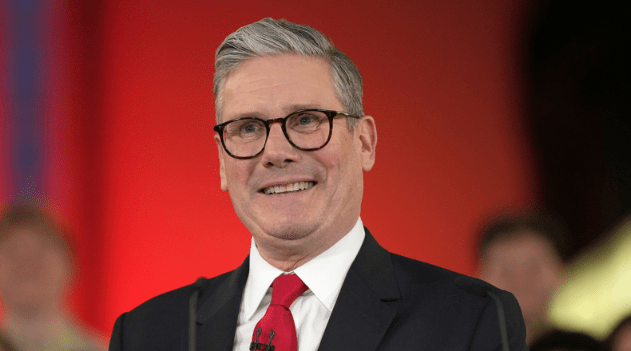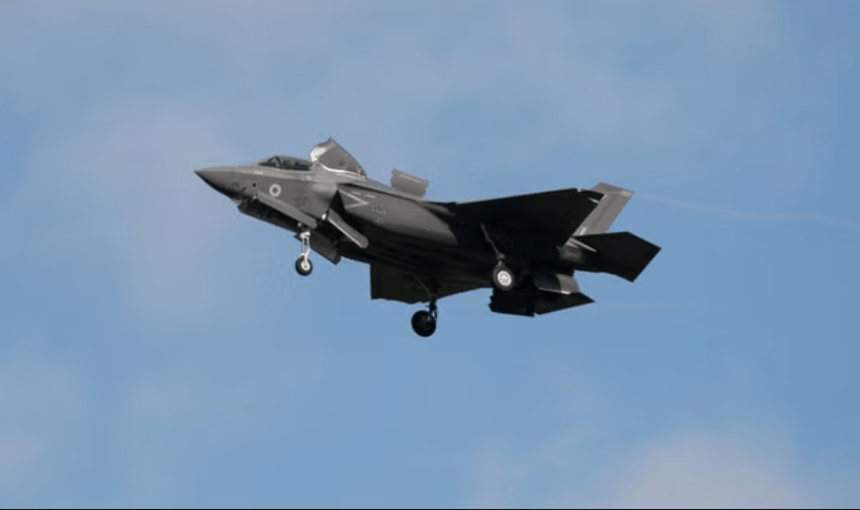Britain is reintroducing a nuclear strike role with the Royal Air Force – purchasing at least 12 new F‑35A jets capable of carrying nuclear weapons for the first time since the Cold War. The UK nuclear-capable fighter jets move is part of a broader NATO mission shift amid global tensions.
At Wednesday’s NATO summit in The Hague, Sir Keir Starmer confirmed the acquisition, stating that “we can no longer take peace for granted” in this “era of radical uncertainty.”
The jets form part of NATO’s Dual Capable Aircraft mission — a collective nuclear-sharing initiative among member states, which the UK had not previously joined.
Ministers describe this purchase as the “biggest strengthening of the UK’s nuclear posture in a generation.” The dual-capable F‑35As will be based at RAF Marham in Norfolk, signalling a significant upgrade in strategic force. Over the lifetime of the programme, the UK plans to buy 138 F‑35 jets.
Key defence implications:
- Reintroducing UK nuclear-capable fighter jets to RAF duties.
- Reinforces the UK’s pledge to NATO’s collective defence.
- Boosts deterrence amid heightened global instability.
The Defence Ministry warns that each F‑35A saves taxpayers around 25% compared to the F‑35B model. Around 15% of the aircraft’s global supply chain is in the UK, supporting over 100 firms and more than 20,000 jobs nationwide. The programme thus offers both strategic security and economic benefits.
A fresh National Security Strategy, published this week, highlights escalating threats from Middle East crises and Russia’s war in Ukraine, signalling that a “wartime scenario” on home soil is conceivable. The investment in UK nuclear-capable fighter jets directly responds to those risk assessments.
On the summit sidelines, Sir Keir committed to raising defence and security spending to 5% of GDP, up from previous targets. Yet financial experts caution that funding this pledge, estimated at over £30 billion, would likely require tax increases.

Paul Johnson of the Institute for Fiscal Studies noted the tough choice: “the money could only come from tax increases, because in the end there’s nowhere else it can come from.”
Sir Keir reiterated that past defence commitments reached without new taxes were achievable, and that no tax rises would affect working people under current manifesto pledges. Future increases may not occur until after the 2029 election, under a separate manifesto.
During the trip, Sir Keir referred to Donald Trump as a “close ally”. However, President Trump declined to clearly recommit to NATO’s Article 5 mutual defence clause, stating: “There are numerous definitions of Article 5. You know that, right? … I’ve become friends with many of those leaders, and I’m committed to helping them.”
Why it matters
- Expands deterrence: Brings back the RAF’s airborne nuclear role after decades.
- NATO alignment: Signals deeper UK integration into collective defence.
- Economic boost: Hundreds of businesses and thousands of jobs benefit from the F‑35 supply chain.
- Fiscal challenges: Raises questions on how to fund defence ambitions without raising taxes on working families.
By reintroducing UK nuclear-capable fighter jets, the UK signals a decisive shift in defence and foreign policy. It’s a defining moment—reshaping strategic capabilities, driving economic gains, and testing fiscal commitments in an unpredictable world.
Headlines to watch
- Delivery timelines and first deployments from RAF Marham
- Breakdown of the funding plan for the 5% GDP defence budget
- Updates on the UK’s role in NATO nuclear sharing
- Global reactions to revived RAF nuclear capacity






